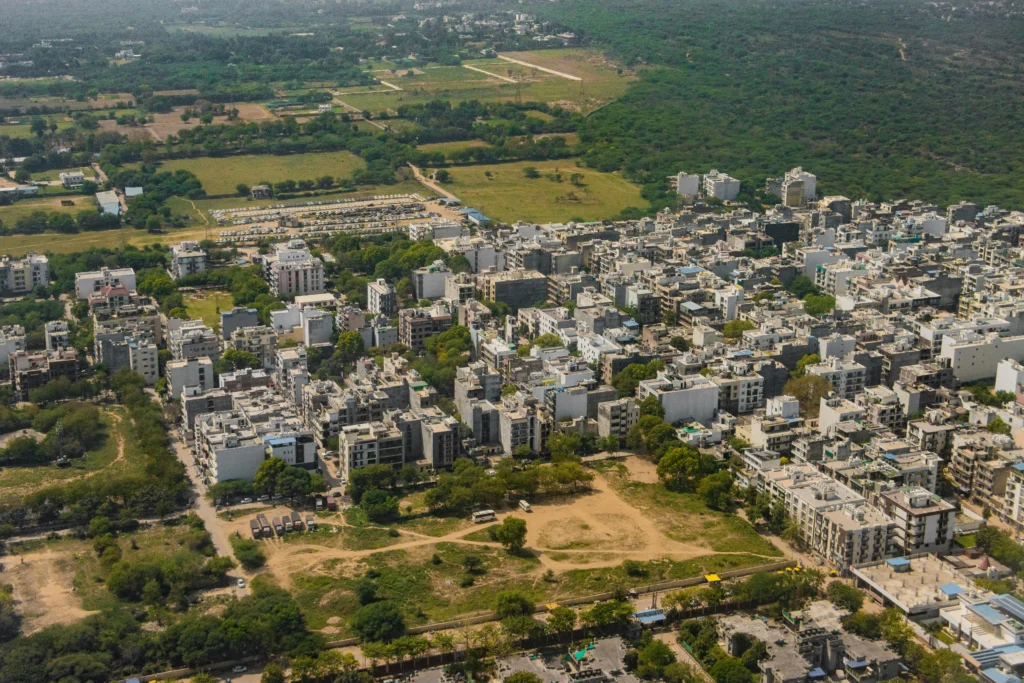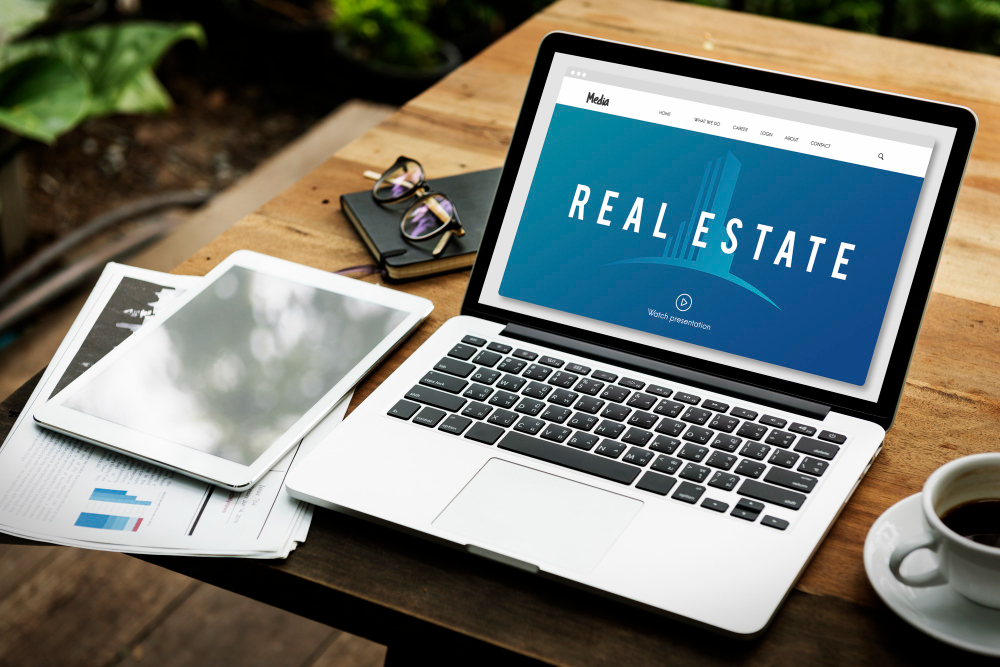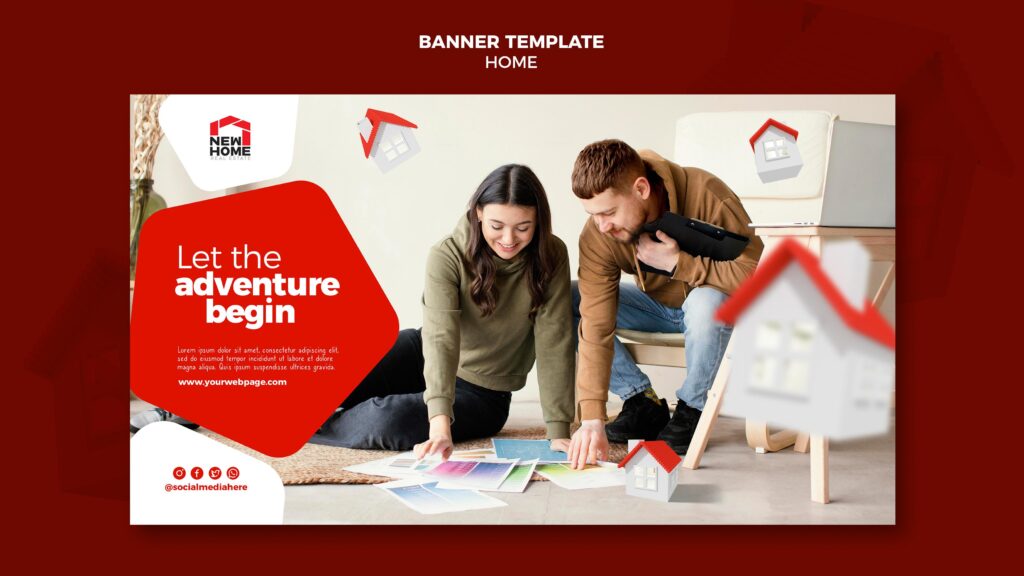In the high-stakes world of real estate, the success of a Pay-Per-Click (PPC) campaign is too often measured by a single, misleading metric: the cost per lead form submission. For decades, the industry has been conditioned to pour vast budgets into bottom-of-the-funnel keywords, battling competitors for the attention of a tiny fraction of the market-those ready to “book a site visit” today. This singular focus is not just a strategic limitation; it is a critical vulnerability.
This narrow approach creates a hyper-competitive, auction-driven environment that leads to inflated click costs and diminishing returns. More importantly, it completely ignores the vast majority-often over 95%-of the potential market that is not yet ready to convert. The real estate customer journey is not an impulse purchase; it is a long, considered process of research, comparison, and validation that can span months or even years. To focus only on the final click is to arrive at the conversation just as it’s ending.
A truly effective strategy requires a paradigm shift: from tactical lead generation to holistic demand creation. It requires building a full-funnel PPC system that engages potential buyers at every stage of their journey. This is the definitive blueprint for moving beyond the limitations of the lead form and constructing a perpetual, predictable pipeline of qualified clients. This is the methodology that distinguishes a simple vendor from a strategic real estate performance marketing agency.
The Flaw in the Foundation: Why a “Lead-Only” PPC Focus Fails
The core issue with a bottom-funnel-only PPC strategy is that it operates on the flawed assumption of pre-existing demand. It presumes a steady stream of buyers are actively searching for your exact project type in your specific location. While this high-intent traffic is valuable, it is also finite and fiercely contested. This leads to several predictable points of failure:
- Keyword Saturation and Escalating Costs: Every competitor is bidding on terms like “3BHK apartments in Gurgaon.” This saturation drives up the Cost Per Click (CPC) relentlessly, forcing you to spend more for the same result over time. You are fighting for a shrinking piece of an overpriced pie.
- Ignoring the Consideration Phase: The modern buyer spends an extensive amount of time researching before ever contacting an agent. They are comparing neighborhoods, exploring financing options, and evaluating developer reputations. A lead-only strategy is completely invisible during this crucial middle-of-the-funnel stage, allowing competitors to build trust and shape the narrative long before you enter the picture.
- A Leaky, Unpredictable Pipeline: By only capturing users at their final decision point, you have no control over the volume or quality of incoming leads. Your pipeline becomes reactive to market fluctuations rather than being proactively filled by your own marketing efforts. It’s the strategic equivalent of only speaking to customers who are already inside your sales office, while ignoring the hundreds walking past, looking at the posters in your window.
To build a resilient and scalable sales engine, you must engage customers across the entire journey. As a premier real estate digital marketing agency, we have seen firsthand that a full-funnel approach is not a luxury, but a strategic imperative.

Stage 1: Building Awareness (Top-of-Funnel)
The objective at the top of the funnel (ToFu) is not to generate leads. It is to create brand awareness and introduce your project’s unique vision to a broad but highly relevant audience before they begin their active, specific property search. You are not just capturing demand; you are creating it.
Platforms & Targeting:
- YouTube: As the world’s second-largest search engine, YouTube is unparalleled for visual storytelling. The goal here is mass reach with an emotional impact.
- Ad Formats: Use a mix of 6-second Bumper Ads for brand recall and 15-30 second In-Stream Ads (skippable or non-skippable) to showcase the lifestyle and vision of your project.
- Targeting: Leverage Google’s Affinity Audiences (e.g., “Luxury Travelers,” “Business Professionals”) and In-Market Audiences (e.g., “In-market for Financial Services/Mortgages”) to reach people whose lifestyle and financial status align with your ideal buyer profile.
- Display Network (GDN): The GDN provides immense reach across thousands of websites, allowing you to place visually compelling banner and video ads. Target users based on the types of websites they visit (e.g., premium financial news portals, luxury lifestyle blogs).
Ad Creative & Messaging:
At this stage, the creative should be aspirational, not transactional. Focus on high-quality drone footage of the location, stunning architectural renders, and videos that sell a dream or a lifestyle. The messaging should be about the vision, the community, or the unique value proposition of the location-not about square footage or payment plans.
Key Metrics for Success:
Success here is not measured by CPL or conversions. The key performance indicators (KPIs) are:
- Impressions & Reach: How many relevant people have seen your brand?
- Video View Rate: Are people watching your videos, or skipping them?
- Ad Recall Lift & Brand Lift: Is your campaign measurably increasing brand awareness and recall in your target demographic?
Stage 2: Nurturing Consideration (Middle-of-Funnel)
Once an audience is aware of your brand, the middle of the funnel (MoFu) is designed to nurture their interest and position your project as the ideal solution to their needs. This is where you transition from broad awareness to targeted engagement.
Platforms & Targeting:
- Social Media (Facebook & Instagram): These platforms are ideal for deeper engagement and education.
- Ad Formats: Use Carousel Ads to showcase multiple property features, amenities, or floor plans in a single ad. Video ads featuring detailed virtual tours are extremely effective here.
- Targeting: This is where remarketing becomes critical. Build custom audiences of people who have watched your YouTube ads, visited your website, or engaged with your Instagram profile. You are now speaking to a “warm” audience that has already shown interest.
- Content-Driven Lead Generation: The goal is to capture a user’s contact information, but not through a hard sell. Offer high-value content in exchange for an email address.
- Ad Formats: Use Facebook/Instagram Lead Ads to make it easy for users to download content without leaving the platform.
Ad Creative & Messaging:
The message shifts from aspirational to educational. Offer valuable assets that help the user in their decision-making journey. Examples include:
- A downloadable PDF guide: “The Smart Investor’s Guide to Sohna Road.”
- An invitation to an exclusive webinar: “Navigating Your First Luxury Property Purchase.”
- A comprehensive floor plan comparison guide.
Key Metrics for Success:
Here, you begin to track engagement and micro-conversions:
- Click-Through Rate (CTR): Are your ads compelling enough to earn a click?
- Landing Page Conversion Rate: How many people are downloading your content?
- Cost Per Lead (for content downloads): What is the cost to acquire an email address?
- Engagement Rate: How are users interacting with your social media posts?
This phase is a core component of sophisticated real estate digital marketing services, as it builds the high-quality, educated audience that will feed the final stage of the funnel.
Stage 3: Driving Conversions (Bottom-of-Funnel)
This is the final stage, where the focus sharpens to converting the warm, educated audience you have meticulously built into qualified sales leads (site visits, phone calls, and direct inquiries). This is where your investment in the upper funnel pays off dramatically.
Platforms & Targeting:
- Google Search Ads: This is the primary platform for capturing high-intent users.
- Keywords: Your keywords should be highly specific and long-tail, indicating strong commercial intent. Examples: “ready to move 4bhk [Project Name],” “[Project Name] payment plan,” or “best luxury villas near [Specific Landmark].”
- Remarketing Lists for Search Ads (RLSA): This is a powerful, advanced tactic. It allows you to increase your bids on your search keywords specifically when the person searching is someone who is already on your remarketing list (i.e., they’ve visited your site or watched your videos). This ensures you are hyper-competitive for the most valuable users.
- Targeted Social Media Remarketing: Continue to run ads to your warm audiences, but now with a direct call-to-action.
Ad Creative & Messaging:
The messaging must be direct, clear, and create a sense of urgency.
- Headlines: “Schedule Your Private Site Visit Today,” “Download the Official Brochure & Floor Plans.”
- Ad Extensions: Fully utilize all available extensions. Sitelink extensions to different property types, Call extensions for one-click calling, Location extensions to show your sales office on a map, and Price extensions to pre-qualify users.
- Call-to-Action (CTA): Leave no room for ambiguity. “Book Now,” “Call Us Today,” “Request a Callback.”
Key Metrics for Success:
This is where traditional PPC metrics become the central focus:
- Cost Per Lead (CPL) / Cost Per Site Visit: The ultimate measure of efficiency.
- Lead-to-Sale Conversion Rate: How many leads are turning into actual sales?
- Return on Ad Spend (ROAS): The final measure of profitability.

Building a Perpetual Pipeline
A full-funnel PPC strategy transforms your marketing from a series of disjointed, expensive campaigns into a single, cohesive system. The awareness created on YouTube and Display feeds the engagement on social media, which in turn creates a highly qualified, cost-effective audience for your high-intent search campaigns. Each stage supports and enhances the others, creating a perpetual pipeline of leads that is both predictable and profitable.
This strategic depth and holistic understanding of the customer journey is what sets a true digital marketing company for real estate apart. It is about more than just managing bids and keywords; it is about architecting growth.
If you are ready to move beyond the limitations of the lead form and build a truly strategic PPC engine for your real estate brand, let’s have a conversation.
Frequently Asked Questions
1. Our current PPC strategy generates leads from Google Search. Why divert the budget to “Awareness” campaigns on YouTube that don’t produce immediate leads?
This is a crucial strategic question. While Google Search is excellent for capturing existing demand (people already searching for you), an Awareness campaign on platforms like YouTube is designed to create future demand. By focusing only on bottom-of-funnel search ads, you are competing in the most expensive arena for a limited pool of buyers. An Awareness campaign builds your brand and introduces your project to a broad, relevant audience before they even begin their active search. This feeds your pipeline, creating a “warm” audience that recognizes your brand later, leading to higher-quality, lower-cost leads in the long run.
2. How do we measure the ROI of a Top-of-Funnel “Awareness” campaign if it’s not based on direct leads?
The ROI for Awareness campaigns is measured through brand-building and audience growth metrics, not immediate conversions. Key Performance Indicators (KPIs) include:
- Ad Recall Lift: Platforms like YouTube can measure how many users are likely to remember your ad. A high lift indicates a memorable and effective creative.
- Audience Growth: The number of new users added to your website remarketing lists and YouTube subscriber base.
- View-Through Conversions: Tracking users who saw your video ad, didn’t click, but later came to your website and converted.
The ROI is realized when these nurtured audiences enter the Consideration and Conversion stages, where they convert at a higher rate and lower cost than a “cold” audience.
3. What is “Remarketing,” and how does it connect the different stages of this full-funnel strategy?
Remarketing (or retargeting) is the engine that connects the funnel. It involves showing targeted ads specifically to users who have already interacted with your brand in some way. In this strategy:
- A user who watches your Awareness video on YouTube is added to a “Video Viewers” audience.
- You then show this “warm” audience a more detailed Consideration ad (e.g., a virtual tour) on Facebook or Instagram.
- If they click that ad and visit your project page, they are added to a “Website Visitors” audience.
- Finally, this highly qualified audience is shown direct-response Conversion ads on Google Search.
Remarketing ensures you are guiding prospects seamlessly from one stage to the next, maintaining engagement and building trust over time.
4. Are social media platforms like Facebook and Instagram better for the Consideration stage than for direct Conversion?
Generally, yes. Social media platforms excel at nurturing interest because they are discovery-based environments. Users are not typically there with the immediate intent to “book a site visit.” Therefore, these platforms are exceptionally powerful for the middle of the funnel. You can use their rich targeting options and visual formats (like carousels and videos) to showcase lifestyle, amenities, and educational content that builds desire and trust. While direct lead-form ads can work for lower-consideration properties, their primary strength in a full-funnel strategy is guiding users from awareness to a state of high intent.
5. What is the ideal budget allocation across the three funnel stages (Awareness, Consideration, Conversion)?
There is no single magic formula, as the ideal split depends on your project’s maturity, market competition, and overall goals. However, a balanced strategic allocation often looks something like this:
- Top-of-Funnel (Awareness): 20-30% of the budget. Focused on efficient, high-reach platforms like YouTube to build your audience pool.
- Middle-of-Funnel (Consideration): 30-40% of the budget. Dedicated to remarketing and social media engagement to nurture the audience created in the first stage.
- Bottom-of-Funnel (Conversion): 30-40% of the budget. Focused on high-intent Google Search ads and converting the warm audiences you’ve built.
A skilled real estate performance marketing agency will continuously adjust this allocation based on real-time performance data.
6. How does a real estate performance marketing agency structure a full-funnel campaign differently than a standard lead generation agency?
A standard lead generation agency focuses almost exclusively on the bottom of the funnel. Their primary concern is driving down the immediate Cost Per Lead (CPL) from search ads. A strategic real estate performance marketing agency architects a complete system. They build separate, interconnected campaigns for each funnel stage with distinct creatives, targeting, and KPIs. They manage audience flow between platforms and provide holistic reporting that measures not just CPL, but also brand lift, audience growth, and the long-term impact on your sales pipeline.
7. What kind of “high-value content” works best for capturing leads in the middle of the funnel?
The most effective middle-of-the-funnel content provides genuine value and helps a potential buyer make a more informed decision. Instead of a sales pitch, offer assets like:
- Comprehensive Neighborhood Guides: An in-depth look at the schools, amenities, and lifestyle of the project’s location.
- Financial Planning Tools: An exclusive webinar or guide on “Navigating Mortgage Options for Luxury Properties.”
- Project Comparison Checklists: A downloadable checklist helping buyers compare features across different properties they might be considering.
- Investor-Focused Reports: A data-rich report on the potential rental yield and capital appreciation in the area.
8. Our real estate sales cycle is very long. How does a full-funnel PPC strategy help make it more efficient?
A full-funnel strategy makes a long sales cycle more efficient by ensuring that by the time a lead reaches your sales team, they are already highly educated, familiar with your brand, and pre-qualified. Instead of your sales team spending time on cold leads, they engage with prospects who have already seen your project videos, downloaded your guides, and been nurtured through remarketing. This results in a higher lead-to-visit ratio, a more productive sales team, and ultimately, a shorter “time-to-close.”
9. What is RLSA (Remarketing Lists for Search Ads), and why is it so powerful for the bottom of the funnel?
RLSA is an advanced Google Ads feature that allows you to tailor your search campaigns based on whether a user has previously visited your website. It is powerful for two main reasons:
- You can bid more aggressively: You can tell Google to bid 25-50% higher on your keywords when the person searching is on your remarketing list. This ensures you appear in the top position for your most valuable, pre-qualified prospects.
- You can use broader keywords: You can confidently bid on broader terms (e.g., “Gurgaon apartments”) only for users who have already shown interest in your specific luxury project, capturing relevant traffic you might otherwise avoid.
10. How does this full-funnel approach affect the overall Cost Per Acquisition (CPA) in the long run?
While it may seem counterintuitive to spend money on campaigns that don’t generate immediate leads, a full-funnel approach almost always lowers your effective Cost Per Acquisition for a final sale. This is because the leads generated from the bottom of the funnel are “warmed up” and of a much higher quality. They have higher conversion rates, meaning you need fewer leads to make a sale. The efficiency gained by not wasting budget on cold, low-converting traffic and by improving your sales team’s closing ratio leads to a more profitable and sustainable marketing operation overall.



